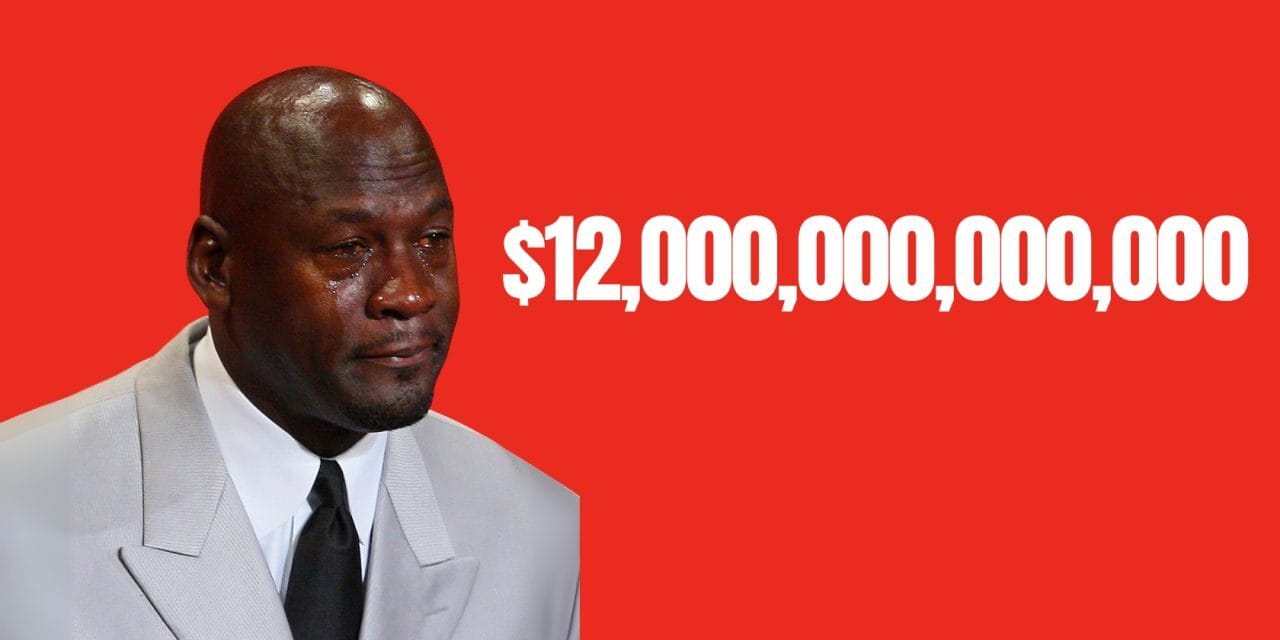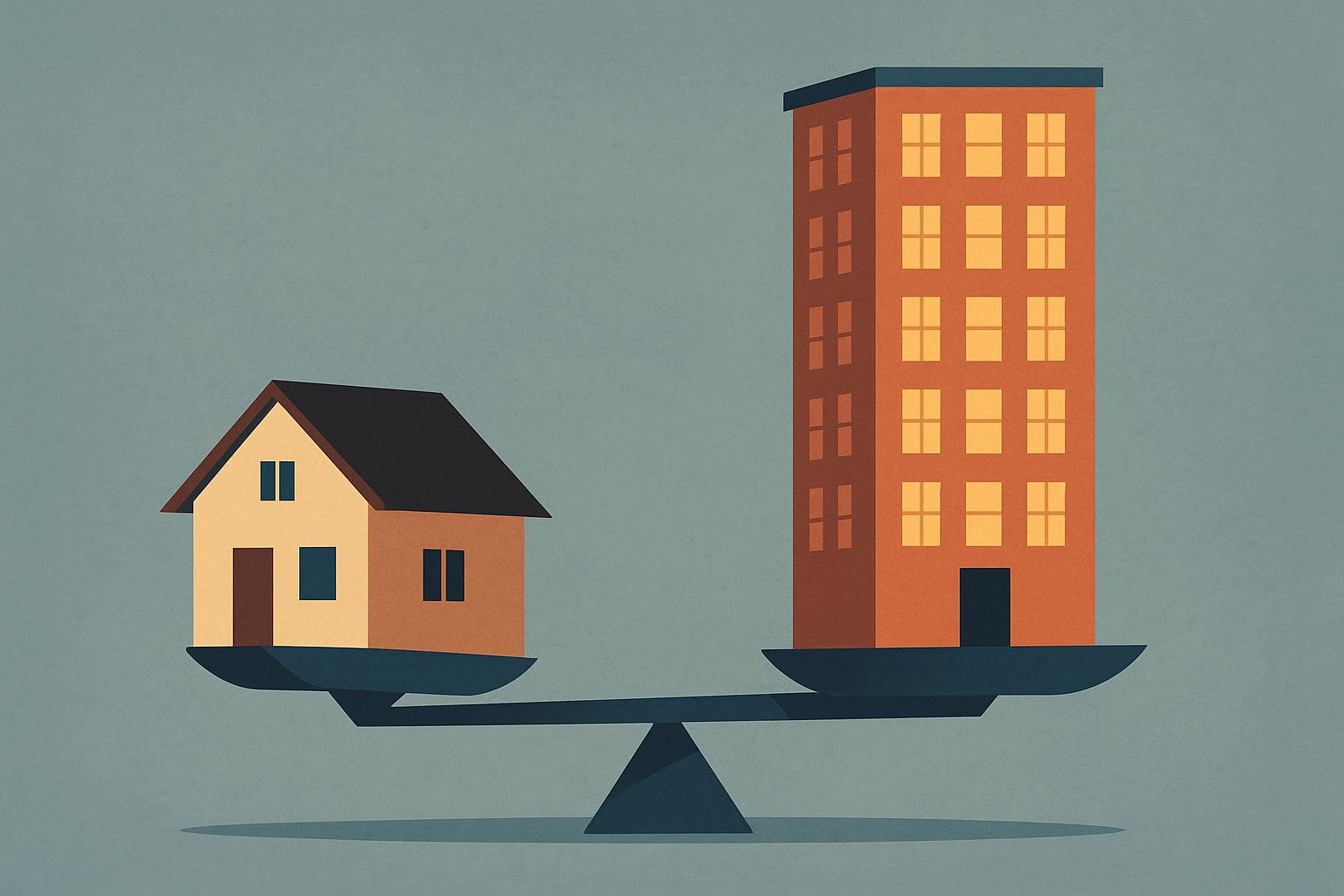We appreciate each and every one of you for taking the time to read Market Minds. Buckle up and enjoy the free value, and you won’t want to miss the biggest lot we’ve ever seen.
Rates Fall, but Foundations Crack

Source: housingwire
Labor Slack, Rate Relief
Mortgage rates hit a 2025 low at 6.49% after the latest BLS report showed more unemployed Americans than job openings, a reversal from the post-COVID labor imbalance. That gap matters: fewer jobs per worker means slower wage growth, which is exactly what the Fed wants to see. Lower wage pressure equals lower inflation expectations, and that’s why yields and mortgage rates pulled back.
Yields Stuck in Concrete
But don’t pop champagne yet. The 10-year yield hasn’t been able to sustain a break below 4.18%. The only time it did was during the “Godzilla tariffs” episode when stocks tanked. Mortgage spreads are friendlier in 2025 than in the last two years, which explains why rates are near lows despite Treasury yields being sticky. Translation: the bond market isn’t convinced we’re on a glide path to cheaper money.
Housing’s Uneven Floor
The labor market is softening but not collapsing. Manufacturing jobs are eroding, residential construction jobs are slipping, and without the artificial boost of AI-related investment, employment data would look worse. That fragility matters: housing demand relies on confidence. When buyers sense job security slipping, they hesitate, even if rates are improving. Sellers, meanwhile, face a market where affordability is still historically stretched.
The Fed’s Poker Game
This was the last job openings report before the Fed meets again. They’ve made progress: job openings have fallen from nearly 12 million to just over 7 million. That gives Powell cover to keep rates steady, maybe even hint at cuts if the next jobs report disappoints. But until yields convincingly move lower, expect mortgage rates to flirt with, not freefall from, these levels.
$12 Trillion on Shaky Ground

Source: nowbam
Flood Risk: The Blind Spot in U.S. Housing
Nearly six million homes worth $3.4 trillion are in the flood crosshairs ,two million more than FEMA even bothers to recognize. That disconnect isn’t a rounding error; it’s a failure of mapping that distorts valuations, lending, and insurance underwriting. The metros most exposed , Miami, New York, Tampa, LA, and Houston aren’t backwaters, they’re power centers of real estate wealth. When insurance models catch up to reality, cap rates and buyer demand in these markets won’t just shift, they’ll snap.
Wind Risk: Whole Markets on the Line
In Florida, Texas, and the Carolinas, it’s not some homes, it’s every home. Entire metro markets where 100% of housing stock faces hurricane wind risk. Miami alone has $1.3 trillion of housing on the block. This isn’t just about premium hikes; it’s about liquidity. When risk is universal, buyers don’t step back carefully ,they bolt. And without buyers, comps collapse.
Wildfire: California’s Canary in the Coal Mine
Wildfire risk is still concentrated $3.2 trillion in homes, with California accounting for nearly 40%. But the tell is in the insurance markets. California’s FAIR Plan exposure ballooned nearly 300% in four years. That’s not a market functioning; that’s a market breaking. What happens in California’s insurance experiment is the roadmap (or warning label) for Colorado, Arizona, and beyond.
Insurance: The New Mortgage Rate
In Miami, insurance eats 3.7% of a home’s value annually $22K a year on a $614K home. That’s not a line item; that’s a second mortgage. In New Orleans, Cape Coral, and Oklahoma City, the story repeats. Insurance has morphed from afterthought to gatekeeper, already reshaping affordability as much as interest rates. The delta between the average 0.8% insurance burden and Miami’s 3.7% is the spread that will make or break deals in climate-exposed metros.
The Real Play
Climate risk is no longer priced into the U.S. housing market. That’s both a warning and an opportunity. Inefficient markets don’t stay inefficient forever. Insurers, lenders, and institutional buyers will eventually recalibrate, and when they do, assets in high-risk zones will either reprice down or disappear from the tradable pool entirely. The edge will belong to those who can see past the lag in government maps, the inertia of buyer psychology, and the wishful thinking of local boards.
The End of the Homeownership Expansion Era

Source: Redfin
A Turning Point in U.S. Housing
For the first time since 2016, the number of U.S. homeowners isn’t growing. In Q2, homeowner households fell 0.1% year over year to 86.2 million. Meanwhile, renter households surged 2.6% to 46.4 million, one of the biggest jumps in recent memory. This isn’t noise. It’s the beginning of a structural shift.
The Economics of Delay
High home prices ($443,867 median in July, a record) and mortgage rates (6.56%, down slightly but still punishing) are freezing would-be buyers. Add in cultural tailwinds delayed marriage, delayed family formation and ownership isn’t just harder; it’s later. Rent is becoming a holding pattern, not a stepping stone.
Equity is the New Luxury
Renting is surging because it’s the path of least resistance. But here’s the catch: renters are opting out of the primary engine of U.S. middle-class wealth — home equity. That bifurcation creates winners and losers at a generational scale. You’re watching the gap widen in real time.
The Geography of Ownership vs. Rentership
Nationally, homeownership still hovers at 65%, but metro-level data tells the real story. In Austin, Denver, Miami, and San Diego, ownership rates sit in the 50–60% range, signaling that the country’s economic growth hubs are structurally tilted toward renters. Compare that to places like North Port, FL (79.5%), Baton Rouge (78.6%), and Charleston (76.9%) where ownership is still the default. Translation: we’re splitting into two Americas, one of equity holders, one of permanent tenants.
The Quiet Opportunity
Falling rates (down from 7% earlier this year) are coaxing some buyers back. But the bigger play isn’t chasing marginal price moves, it’s recognizing where ownership will remain aspirational. Markets with persistent affordability challenges (Los Angeles, New York, Las Vegas) will deepen as renter economies. That means more institutional landlord dominance, more pressure on rental yields, and more tension between asset owners and tenants.
Palaces still exist
The Sand Castle is nowadays listed at $108M not a bargain always a dreamed place to share.
Check it out👇
TL;DR (Too Long; Didn’t Read)
Mortgage rates may be falling, but it’s not time to exhale, it’s time to get real. Buyers are still haunted by economic uncertainty, and sellers are anchored to pre-pandemic fantasy valuations. Add to that climate risk, now the invisible wrecking ball of real estate value. When insurance becomes a second mortgage, you don’t have a housing market, you have a game of musical chairs where every seat is wet. The Fed’s data-driven poker game might bring rate cuts, but even cheap money can’t fix a market priced for perfection and built on fragile ground.
Have a great weekend - we’ll see you next Saturday.
Cheers 🍻
-Market Minds Team


